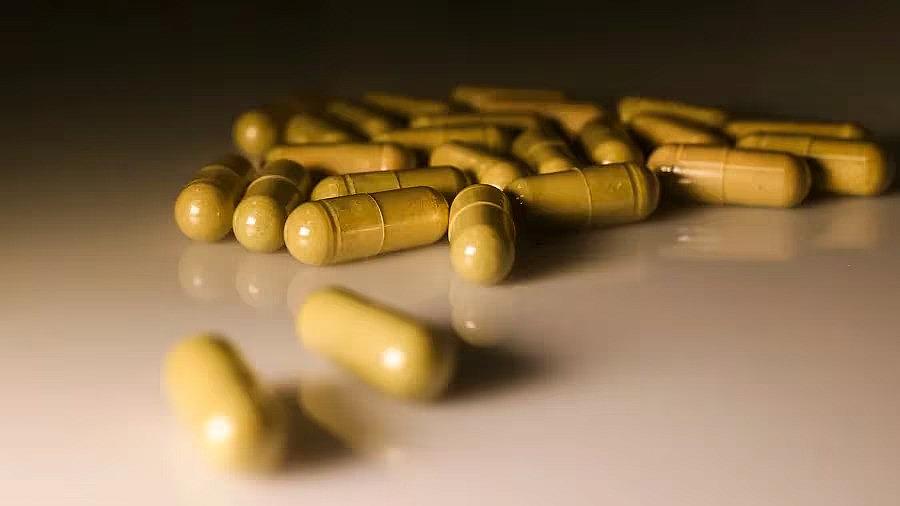Kratom investigation by Tampa Bay Times stirs up action and reaction
The story was originally published by the Tampa Bay Times with support from our 2023 National Fellowship.

The Tampa Bay Times investigation about kratom earlier this month spanned more than 16,000 words.
DIRK SHADD | Times
If you had never heard of kratom before this month, I trust you’ve heard of it now.
Hundreds of people in Florida have died from kratom-related overdoses in the past decade. The vast majority of those deaths involved a fatal mixture of the herb and other substances, but kratom alone has accounted for dozens of tragic outcomes across the state.
That was one of the central findings of a three-part Tampa Bay Times investigation called “Deadly Dose,” an exhaustive and meticulously researched series that spanned more than 16,000 words.
A team of reporters analyzed thousands of pages of medical examiner reports in every Florida county where kratom was determined to be the primary cause of death or a contributing factor. We bought samples of kratom and tested it, exposing how little is disclosed by the industry about the actual potency of its products and the risks consumers may face. We traced the mysterious supply chain from Southeast Asia to overdose scenes, and we detailed the considerable clout — and questionable tactics — of the industry’s main advocacy and lobbying group.
The series serves as testament to the value of strong, independent investigative journalism.
You’ve probably seen the word kratom in neon outside neighborhood smoke shops. Gas stations sell liquid vials next to energy shots. Kratom is legal in most places in America — though a handful of states have banned the substance and federal authorities have blocked more than 1,000 shipments entering the nation’s ports. Florida enacted a law this summer that sets the minimum age to buy the herb at 21.
At low doses, kratom acts like a stimulant. At higher doses, it works like a sedative. Advocates argue that it offers milder pain relief than stronger opioids and that it helps people wean themselves off hard drugs. But it can be addictive and has been associated with other serious health problems, like seizures.
A fair share of the nation’s kratom supply arrives under false pretenses. Times reporters were able to document how tons of kratom passes through customs, despite a federal import alert, because it is labeled “not for human consumption” or called seaweed or fertilizer.
Derived from a tree native to Indonesia and Thailand, the scientific research around kratom remains murky. But this fact is undeniable: Kratom’s principal chemical ingredient mitragynine has been showing up with greater frequency in autopsy reports across Florida and beyond.
Kratom is often sold without any labeling about potency or instructions on how to safely consume it — all while manufacturers and vendors concoct increasingly potent versions of the herb. These powerful extract products heighten the chemical compounds in kratom and can be especially dangerous.
And, indeed, deadly.
Since the series launched, two bills have been introduced in Tallahassee seeking more oversight. At least one Florida community adopted tighter measures to regulate the herb. Citing our “groundbreaking” investigation, the Orlando Sentinel and South Florida Sun Sentinel called for stricter consumer protections.
Not everyone is happy. The American Kratom Association organized a petition campaign to demand that we retract all our “anti-kratom stories.” Hundreds of the association’s supporters have filled out electronic forms and emailed the Times. They cite no inaccuracies in our reporting. Instead, the industry group is rallying followers with the wild accusation that our series was funded by trial lawyers. In a news release, the industry makes a vague reference to an unnamed lawyer.
“A social media post has been discovered that was authored by a leading trial attorney who has filed multiple product liability lawsuits against kratom vendors acknowledging the Tampa Bay Times anti-kratom investigative stories received funding from trial lawyers for their stories,” the industry news release says.
We have no idea what they’re talking about. It’s patently false to suggest our journalism was influenced by anyone.
Based on their meritless accusation of a conflict, the kratom association and its followers have insisted we disclose who paid for it.
We’re happy to do that anytime anyone asks. The investigation was funded by the same sources that support all of our journalism:
You.
Our readers who subscribe, our advertisers who advertise, our community of donors who contribute to our journalism funds. That’s who makes our reporting possible. But none of these sources shape or influence the stories we pursue.
The Tampa Bay Times has a storied legacy of independent journalism, produced without fear or favor. Our business side collects revenue and no one but us has a say in how it’s spent.
As we stated when our series first appeared, Deadly Dose cost about $400,000 — mostly to compensate the two dozen journalists who spent months or longer on the project. We also noted at the time that the University of Southern California Annenberg Center for Health Journalism helped pay for $3,600 of our kratom testing.
We generally don’t respond to baseless accusations. But when an industry tries to drum up broad support by creating a fictional narrative, we are duty bound to confront falsehoods with the truth.
